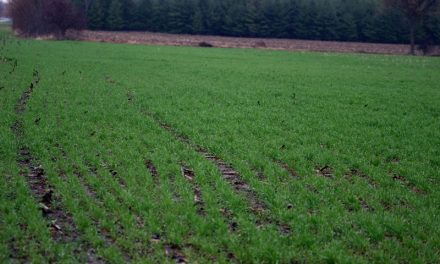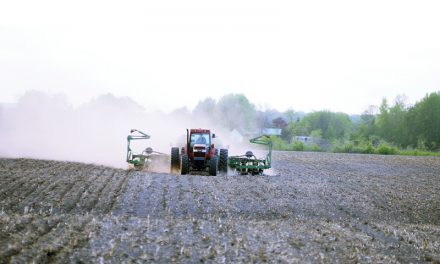By Ashley Knapton – B.Sc.(Agr.), CCA-ON
AgriNews Contributor
Wintertime should be a calm time of year in the feed world. Herds have had a chance to adjust to new feed, and cooler temperatures allow for stable feeds. But what does it mean if this is not the case? What if our feed is giving us trouble in the quiet of winter? It means it is time to investigate why our silage heats!
Spoilage heating results from exposure of the fermented feed to air. As the feed is exposed to air, the yeast starts to become active again, raising the pH level of the feed from more acidic to more basic. This more moderate pH level allows more organisms to grow, including the dreaded spoilage organisms. This is when we start to experience heating and mould formation, which could impact feed intake and cause feed waste.
An important thing to keep in mind is that there are two types of heat – spoilage heating and physiological heat. Spoilage heating is as previously described – an increase in microbial activity that causes spoilage. Physiological heat, on the other hand, is not a problem, although it might be mistaken for one. Feed can retain heat – either the heat present at the time it was placed in storage if harvested on a hot day or heat that is generated during the fermentation process. As we increase the size of our storage facilities, we will find that heat has a harder time escaping from the centre of these facilities. An easy way to differentiate physiological vs spoilage heat is to take some feed in a pail and measure its temperature right out of storage. Leave it loosely piled and return a few hours later to check the new temperature. If that feed is actively spoiling, it will either maintain or continue to increase in temperature. If the temperature drops a few hours later, the feed is not heating and, most encouragingly, will not be warm in front of the cows.
Proper storage of feed helps to reduce or eliminate heating and moulding challenges in our silages. There are two key considerations when working to prevent spoilage, the first one being the quick elimination of air at the initial storage stage, and the prevention of air from entering over the course of feedout. Proper covering of feed with sufficiently thick and well sealed plastic is important. Many farms are finding an additional layer of oxygen barrier is a worthwhile investment. Another big influencer of oxygen elimination is adequate packing density. When storing feed in a bunk for example, it is crucial to ensure the feed is packed tightly to prevent the air from penetrating too deep into the bunk. The looser the feed, the more air can sneak in. The deeper air can sneak in, the longer the yeast has a chance to grow, allowing spoiled feed to begin forming several days before it is even at the face of the bunk. Packing density should be 15-16 lbs/ft3, recognizing that both chop length and moisture impact our ability to hit this target. If your feed is drier, it’ll be harder to pack, so a shorter chop length should be employed to help make it easier. Before drastically changing your particle length, take time to have a conversation with your nutritionist to ensure you don’t go too far and short the cows of physically effective fibre.
Another key management tool when storing feed is a proven inoculant. An inoculant containing a L. buchneri bacteria will help to produce higher levels of acetic acid as a by-product of fermentation. This increased level of acetic acid helps to inhibit yeast growth, thus preventing spoilage. It’s important to note that just as not all corn genetics are the same, not all bacteria genetics are the same. When preparing to invest in an inoculant for your feed storage, ensure there is sufficient research behind the product as well as a high level of quality assurance. Factors like storage, viable bug count and CFIA registered claims are all valid factors to consider when selecting an inoculant. Remember that more is not better when applying inoculants! The other thing to remember when using an inoculant is that it cannot fix a poor storage job. If you are missing the mark on moisture, packing density or sealing a storage facility, an inoculant’s performance will be limited.
It is paramount to ensure that our feed is stored appropriately at this time of year because it only gets harder for it to remain stable as the temperature rises. We experience greater heating challenges as things warm up in the spring and summer since conditions are more favourable for bacterial growth. Keep tabs on any feed stability challenges and, if necessary, get ready to put a new plan into place for next year!












